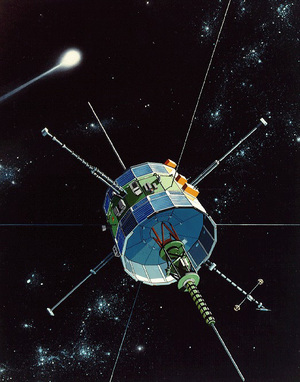
You might call it the ultimate long shot — a group of space enthusiasts trying to reestablish contact with a wayward satellite launched in 1978. Figuratively speaking, it’s been off the radar for decades.
No more.
“The initial contact was a tone followed by specific commands,” project organizer Keith Cowing told NPR’s Nell Greenfieldboyce by email. “We learned a lot simply by being able to talk to it and get it to do things.
“May not sound like much but that was a huge unknown,” he adds.
Nell says that ISEE-3 “has been on a long, lonely trek around the Sun for about three decades after a mission to a comet.”
Now it’s approaching Earth and it could be commanded to go to a spot between our planet and the Sun, where there’s a chance it could still do some good science, Nell says.
The biggest challenge had been figuring out how to talk to the International Sun-Earth Explorer-3, because space communications have changed so radically over the years. NASA agreed to let a private group, known as the ISEE-3 Reboot Project, raise money and try.
The group used the Arecibo Radio Observatory in Puerto Rico to send commands — and ISEE-3 responded.
As Nell reported in March, the International Sun-Earth Explorer-3, originally built to study the solar wind, was “borrowed” by a NASA scientist in the 1980s, and redirected toward a rendezvous with a comet.
Nell writes that the scientist, Robert Farquhar, “came up with a complicated trajectory that would let this spacecraft intercept a comet Giacobini-Zinner in September of 1985, months before an international armada of other space probes (but none from the U.S.) would arrive at Halley’s.
“We beat all the other countries of the world,” recalls Farquhar. “The European Space Agency. The Russians. The Japanese.”
The team that’s “recaptured” ISEE-3 will begin to assess the health of its systems and instruments in the days and weeks ahead, Nells says. If all goes well, they hope to fire its engines and put it on a new path by mid-June.
“We need to know a lot before we do that,” Cowing told NPR. “This is just the beginning of a long process.”
9(MDEwMjQ0ODM1MDEzNDk4MTEzNjU3NTRhYg004))
After Decades Of Silent Wandering, NASA Probe Phones Home
